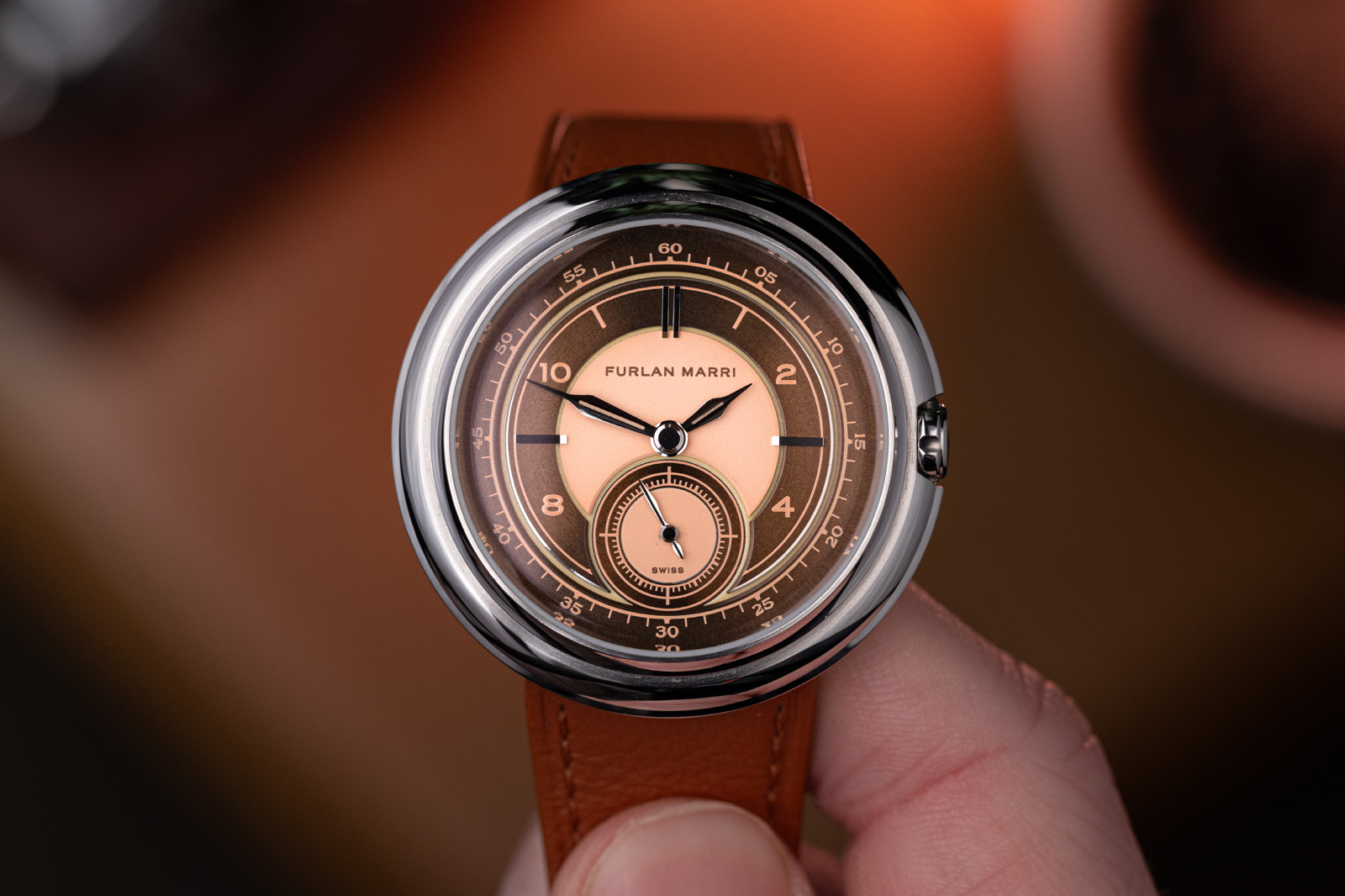


In an industry as broad as horology where brands with heritages centuries long rub shoulders with microbrands run out of people’s garages (sometimes literally), it’s no surprise that there is an equally broad range of styles and designs out there. Which means sometimes you come across an interesting, niche novelty that leads you down a rabbit hole of awesome vintage designs. Case in point, the Furlan Marri Disco Volante. After its launch in the summer of last year, I simply had to learn more about the UFO shaped watches that inspired it.

Omega CK2013, image credit: Phillips
The term Disco Volante means flying disk, as in the classic saucer shape of sci-fi spaceships. In wristwatch circles it refers to a completely circular design without lugs or protruding crowns that makes for a distinctive round shape. Something the 38mm case of the Furlan Marri Disco Volante replicates brilliantly. The earliest examples of the Disco Volante design can be traced to the early 20th century and the Omega CK2013.
Released in 1932 the CK2013 epitomised the key aspects of the flying saucer style with vintage proportions of 39mm, a smooth bezel and a domed sapphire crystal. That dome means that a profile silhouette of the watch has the distinctive flat circle and central cockpit of the stereotypical UFO. It also sports an Art Deco dial with sector display, railway minute track and in many references a small seconds subdial at 6 o’clock. Interestingly, original sketches and advertising show a full size crown but it appears that by the time the watches went to production it had been shrunk to fit within the diameter of the case to create the uninterrupted circular shape.

Vacheron Constantin Disco Volante, image credit: Analog:Shift
Following in the wake of the CK2013, the Disco Volante design had an immediate period of popularity. Vacheron Constantin produced a watch that like Furlan Marri’s modern interpretation was also called simply the Disco Volante. Though in classic VC fashion it’s much more about the finishing and decorative arts than Omega’s version, featuring a Clous de Paris bezel and matching guilloché sector dial.
Audemars Piguet also had a go at the saucer shaped design in the 1950s, designed by Gebhard Duve whose contributions to AP’s heritage have been frustratingly overshadowed by one Gerald Genta a few decades later. Their Disco Volante actually follows more in the footsteps of Vacheron’s rendition of the style rather than Omega, featuring the same Clous de Paris finishing on the bezel. The bezel is also particularly wide, sitting around the relatively normal, central dial.

After the 1950s the popularity of the design began to wane in the watch industry. However, the Disco Volante name was still used in other industries such as motoring. In 1952 Alfa Romeo created an experimental series of cars with flared, rounded bodies called the Disco Volante Spider. They were developed in wind tunnels in an effort to improve aerodynamics. They never quite achieved inter-galactic flight but they’re seriously cool all the same.

Jumping forward more than half a century we come to the Furlan Marri Disco Volante. With its slim steel case and sector dial design its design codes arc all the way back to that original Omega rather than the slightly later gold models from VC or AP. Though while it may be vintage in its inspiration it still has modern elements to its design such as an innovative use of lume to frame the display in low light conditions. It’s proof, if it were needed, that sometimes following unconventional designs from the past can lead to modern gems.
More details at Furlan Marri.
Oracle Time